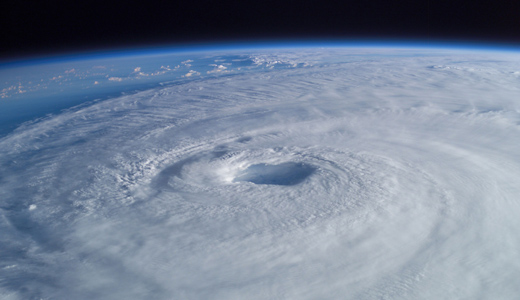
The title of this piece should instead be: how to weather the next few years of stupid politics over climate change while watching the oceans rise, acidify, and lose oxygen, and while watching extreme drought, forest fires, and weather slap us upside the head. We will see various Republicans, coal-state Democrats, fossil fuel company flacks and CEOs (is that redundant?) deny what is obvious to anyone paying attention. Agricultural yields will drop, and human hunger increase and intensify. Supposedly well-meaning apologists for the capitalist system will admit that climate change is real but insist that only relatively small technological fixes are needed (I’m looking at you, Al Gore). Water stress for hundreds of millions of people will intensify at the same time that Nestle executives argue that fresh, safe water is not a right, but rather a commodity for their profit.
Our world is changing as we fiddle with climate change denier nonsense. Of course, the nonsense is not real-it is manufactured. Exxon knew way back when, before they started funding climate change deniers, that the world was warming and would warm more. They knew that such knowledge was dangerous for their short-term profits, and they needed to spread some bullshit around so action would be delayed. So that they could keep making excess super-profits, while getting tax breaks and write-offs from governments to the tune of billions of dollars a year.
Things are changing. The climate change movement is growing, expanding to take on more aspects of the challenge facing humanity. The divestment from fossil fuels movement, the civil disobedience at proposed pipelines and coal plants, the injection into electoral campaigns-all are growing parts of our movement. The range of alliances with other organizations and movements is also growing and solidifying-with Black Lives Matter, the labor movement, voting rights struggles, and others.
But humanity has not yet turned the corner. We have not yet escalated to taking enough serious steps to matter. Emissions are still growing worldwide in spite of decreases in some countries. The recent COP21 Paris Agreement commits countries to ambitious goals but lacks enforcement powers, and even the steps promised in it will not be anywhere near sufficient. The Keystone pipeline was defeated, at least in part, but there are more pipeline proposals in the pipeline.
What we can already predict
We can predict, from growing scientific knowledge, that there will be more bad news and more impacts from climate change in our future. The outcomes of predictions that were formerly cloaked in scientific uncertainty now appear, with further study and proof, to be even worse than expected, not better (as implied by all the right-wingers who used uncertainty as code for “not really that bad”). Each new study brings more bad news-about melting permafrost, ocean acidification, extreme weather, and on and on.
And we know from the history of the last few years, when challenged by facts and reality (and struggle), right-wing hacks will escalate their rhetoric, their climate change denial, and their false claims that acting to protect the natural world on which all humanity depends will destroy the economy (meaning: their profits). The illogic, confusion, and disinformation would be humorous for all of us if the consequences were not so dire.
We can confidently predict that science will give us much more bad news. The politics around climate change will become a bigger issue in elections around the world and resistance to serious action will escalate in ferocity, stupidity, and denial. There will be more innovation and experimentation with improving technology to address climate change and our energy needs.
We can also confidently predict that the costs of taking serious action on climate change will continue to rise with every day of delay. Action taken back in 1988 when Dr. Hansen testified before Congress about global warming would have cost less in the long run. Action taken back in the 1950s and 60s, when Exxon knew this was a serious problem, would have cost less. Action taken ten or twenty years from now will cost much more-both in financial terms as well as in human lives harmed.
The longer we wait, the more lives will be disrupted and destroyed by the increasing effects of climate change-fresh water made unavailable, the costs of super storms on homes and lives, the ranges of diseases like malaria and Zika spreading, and more. We have already begun to feel these impacts; if we don’t act, they will only become more severe.
The reason for hope
But most of all, ignored by mainstream pundits and even by scientists increasingly distressed by our limited action, we can confidently predict that the environmental movement will grow-in size, in sophistication, importance, political impact, range of alliances with other movements, and strength (which is a combination of all these factors).
This is the reason for optimism in the face of dire and scary news. Billions of people are being motivated by climate change-in electoral struggles, street actions, mass demonstrations, civil disobedience, and personal habits. More of us are concerned for future generations and are ready to respond to the growing body of knowledge and rapidly-changing reality of climate change.
This is the reason for hope-that the only force capable of creating fundamental economic, political, environmental, and social change is in the process of learning how to fight for that change.
There is a movement which has moral, political, ethical, economic, personal, technological, and practical dimensions which will transform the world in the coming decades. This movement will make changes, not soon enough or fast enough, but enough to actually work. This is because it is developing the mass power and the broad understanding to create the change we will need to save humanity.
While no one piece of this movement is enough, it can accumulate knowledge, experience, and power. Some people right now are only ready to recycle, and that by itself is not enough. Some are encouraged that the nations of the world have committed to keep temperature increase below 2 degrees Centigrade, which is encouraging but nowhere near enough-especially with no penalty for lapsing or ignoring their promises. Some are dazzled by the technological transformations already taking place in energy, production, transportation, and agriculture. But those innovations too, by themselves, are not enough.
The only thing that will be enough is if billions of people take action in their own interests and for their children. The only way to maintain our own hope in the face of dire scientific certainty, political betrayal and cynicism, and inaction, is to be part of that change. We must be part of mobilizing those billions, to be part of the future that we will create.
Photo: Hurricane Isabel viewed from the International Space Station in 2003. Credit: NASA. Image courtesy of Mike Trenchard, Earth Sciences & Image Analysis Laboratory , Johnson Space Center. Public Domain












Comments